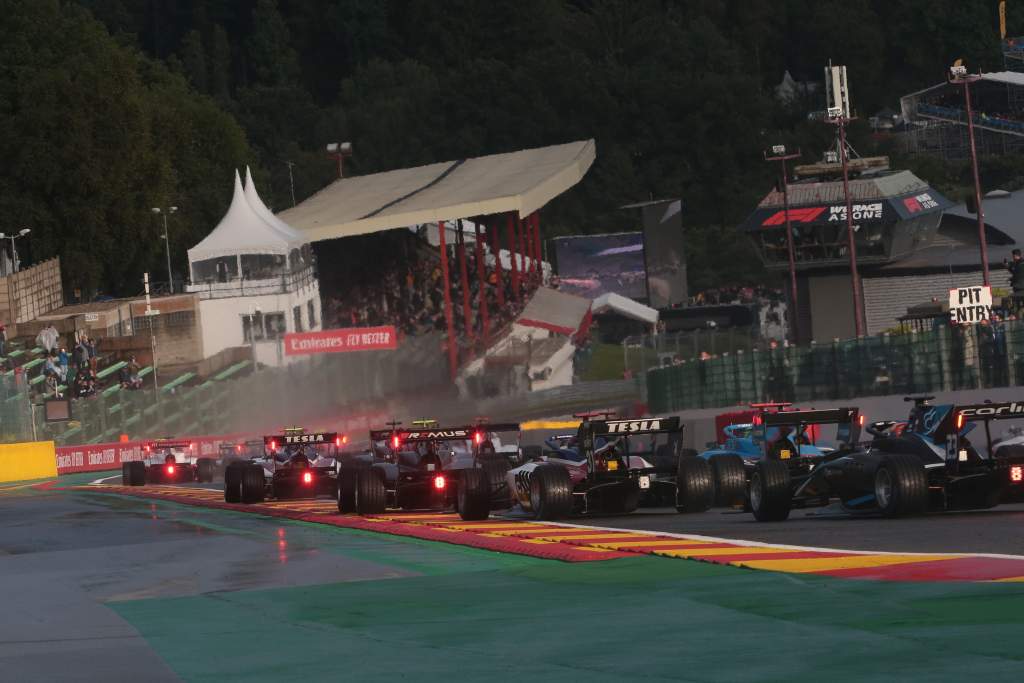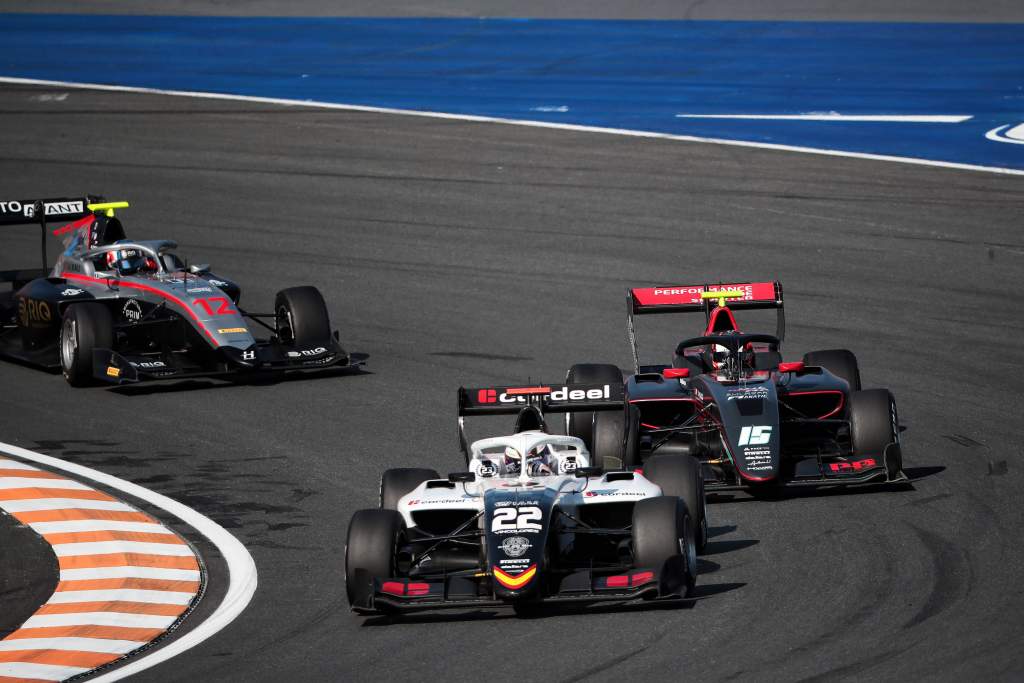Up Next

Formula 1’s support series Formula 2 and Formula 3 will return to racing on the same grand prix weekend “wherever possible” from 2022.
Prior to this weekend’s Russian Grand Prix, this year’s F2 and F3 campaigns have run on separate weekends in 2021 after running on the majority of the same weekends for the last decade (including when they were known as GP2 and GP3).
The move was made in the name of cost-cutting with nine of the 11 F2 teams also competing in F3, allowing for many of the same personnel to work on both championships.
The F2 calendar was shrunk from 12 to eight rounds, but with three races per event instead of two, while F3 moved from nine to seven rounds and also expanded to three races per weekend.

Two of those three races were reverse-grid sprint races, with the grid for the first race set by reversing the top 10 (or top 12 in F3) from qualifying, and the grid for the second by reversing the top 10/12 finishers from race one.
Sunday’s feature race grid was unaffected by the two reverse-grid races, and instead was set by Friday’s qualifying results.
The scheduling has drawn widespread criticism with a two-month gap between F2’s opening two rounds and an even greater gap between this weekend’s Sochi round and the final two rounds of the F2 season.
F1’s 2022 silly season has also almost completely passed by with none of the current F2 grid securing a seat on the grid, and only one seat at Alfa Romeo remaining – albeit one where F2 frontrunner Guanyu Zhou is among the favourites to take it.
From 2022, both F2 and F3 will return to having two races per weekend and will race alongside each other once more.
Both will continue to feature a single practice and qualifying session on Friday but will now have just one reverse grid sprint race on Saturday, with the feature race remaining on Sunday.
The top 10 in qualifying will be reversed to form the grid for the F2 sprint race, while F3 will reverse its top 12 from qualifying to set the grid for the sprint race.

In the pre-2021 formats, the reverse-grid element was the leading finishers from the Saturday race being reversed on Sunday grids.
The grid for the Sunday features races will be set by the qualifying results.
Series chief Bruno Michel said the financial picture looked different going into 2022 and the format could be reconsidered as a result.
“We know at this time of the season how the drivers market is going to look like for next season, and I must say that for the moment it looks reasonably better than last year,” he explained.
“The economic situation is better. What we need also to understand is that there’s not going to be a major difference in terms of costs – there will be a different in logistic costs because the teams will go to more events than they were this year.
“But on the other hand I think for F3 doing three races per weekend was possible, for F2 it was very, very difficult because we still continue to limit the number of operational people per team, to limit the costs, and we need to be quite careful about that.
“But we think that the difference is not going to be so high next year in terms of costs, and we think also that the category will do quite well next year.”
As with F1, no official calendar has been released, although it’s expected that F2 and F3 will increase the number of rounds to accommodate for the one fewer race per weekend.





